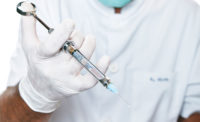Call me crazy, but it is possible. In February 2012 ISHN published my article, “Endocrine Disrupting Chemicals pose challenges: Many EDCs are harmful at low doses and safe at high doses.”2 I based the article upon a review of the evolving science including “Endocrine-Disrupting Chemicals: An Endocrine Society Scientific Statement” (2009).3 As a CIH with graduate studies in toxicology, I understand that nontraditional inverted-U or U-shaped dose-response curves, which gives rise to dose dilemmas, are scientifically valid.
Who’s right?
Science may be manipulated to influence decisions. ISHN’s October 2013 article, “Critics of EU chemical policy had industry ties”4 is a current example. Additional examples are found in the February 2012 report, “Heads they win, tails we lose: How corporations corrupt science at the public’s expense” from the Union of Concerned Scientists.5 The lead author of the report, Dr. Francesca Grifo, was hired by the EPA on November 11, 2013, to be the agency’s new scientific integrity official.
Transparent
ACSH, founded in 1978, is marketed as an independent research and advocacy group, with anonymous funders, which debunks junk science. I’ve followed ACSH for many years – agreeing with some scientific views but bewildered on many others, such as the dose controversy above. In October 2013 Mother Jones published the article, “Leaked Documents Reveal the Secret Finances of a Pro-Industry Science Group.”6 Financial backers to ACSH are no longer anonymous. Tobacco companies planned to give ACSH $338,200 between July 2012 and June 2013.
You are a scientist
In the past three years all government agencies developed a Scientific Integrity Policy. The EPA’s policy 7 includes a full-time position to monitor and police scientific integrity agency-wide; which brought about the hire of Dr. Grifo.
According to the EPA’s policy, science is an expansive term that refers to the “full spectrum of scientific endeavors, e.g., basic science, applied science, engineering, technology, economics, social sciences, and statistics.” And the term “scientist” refers to anyone who “collects, generates, uses, or evaluates scientific data, analyses, or products.”
You’re a scientist. But are you a good scientist?
One way to tell is whether you read and understood the entire mandatory appendices A and B in OSHA’s HazCom standard. A good scientist will understand the details of data they must evaluate and apply. A superficial understanding may not be enough.
Trust the experts?
The logic of how views are manipulated, and for the most part who manipulates these views, can be found in the book, “Trust us, we’re experts! How industry manipulates science and gambles with your future,” by Sheldon Rampton and John Stauber (2001).
Unprecedented times
These are unprecedented times for science issues, particularly health science issues from chemical exposures. Physicians are leading the way for change.
• In November 2013 the American Medical Association, which represent over 200,000 physicians in the U.S., adopted five new polices to “improve health of the nation.” Two of these polices are “modern chemical controls” and “stricter OSHA standards for permissible exposure to silica dust.”8
• In October 2013 the American College of Obstetricians and Gynecologists along with the American Society for Reproductive Medicine, which represent more than 60,000 physicians, noting that “robust scientific evidence has emerged” issued a report that calls for new approaches to “toxic environmental agents.”9
Global science impacts local science. The U.S. Endocrine Society’s 2009 Scientific Statement on EDCs prompted sister societies globally to take action. In June 2013 the Royal College of OBGYNs, a physician organization based in the EU with members in more than 100 countries, issued Scientific Impact Paper 37: Chemical Exposures During Pregnancy.10
Science wars
Physician beliefs will trigger more health complaints at the workplace. The squeaky wheel must get grease. The old grease that PELs represent safe limits won’t be enough. And telling employees that chemical exposures are overhyped, an ACSH technique, is now less effective — medical doctors trump spin doctors.
Solider for truth?
It is foolhardy to simply take a side in the science wars and say, “I believe ACSH” or “I trust the Endocrine Society views.” Evaluate the science before you develop the best risk treatment. Set up your battle plans to be on the winning side in the science wars. The battle plan should include the development and implementation of a scientific integrity policy for your organization.
References
1. http://acsh.org/2013/11/bumbling-bpa-critics-actually-manage-prove-wrong-easy/
2. http://www.ishn.com/articles/92516
3. http://www.ncbi.nlm.nih.gov/pubmed/19502515
4. http://www.ishn.com/articles/print/97036-critics-of-eu-chemical-policy-had-industry-ties
5. http://www.ucsusa.org/assets/documents/scientific_integrity/how-corporations-corrupt-science.pdf
7. http://www.epa.gov/osa/pdfs/epa_scientific_integrity_policy_20120115.pdf


